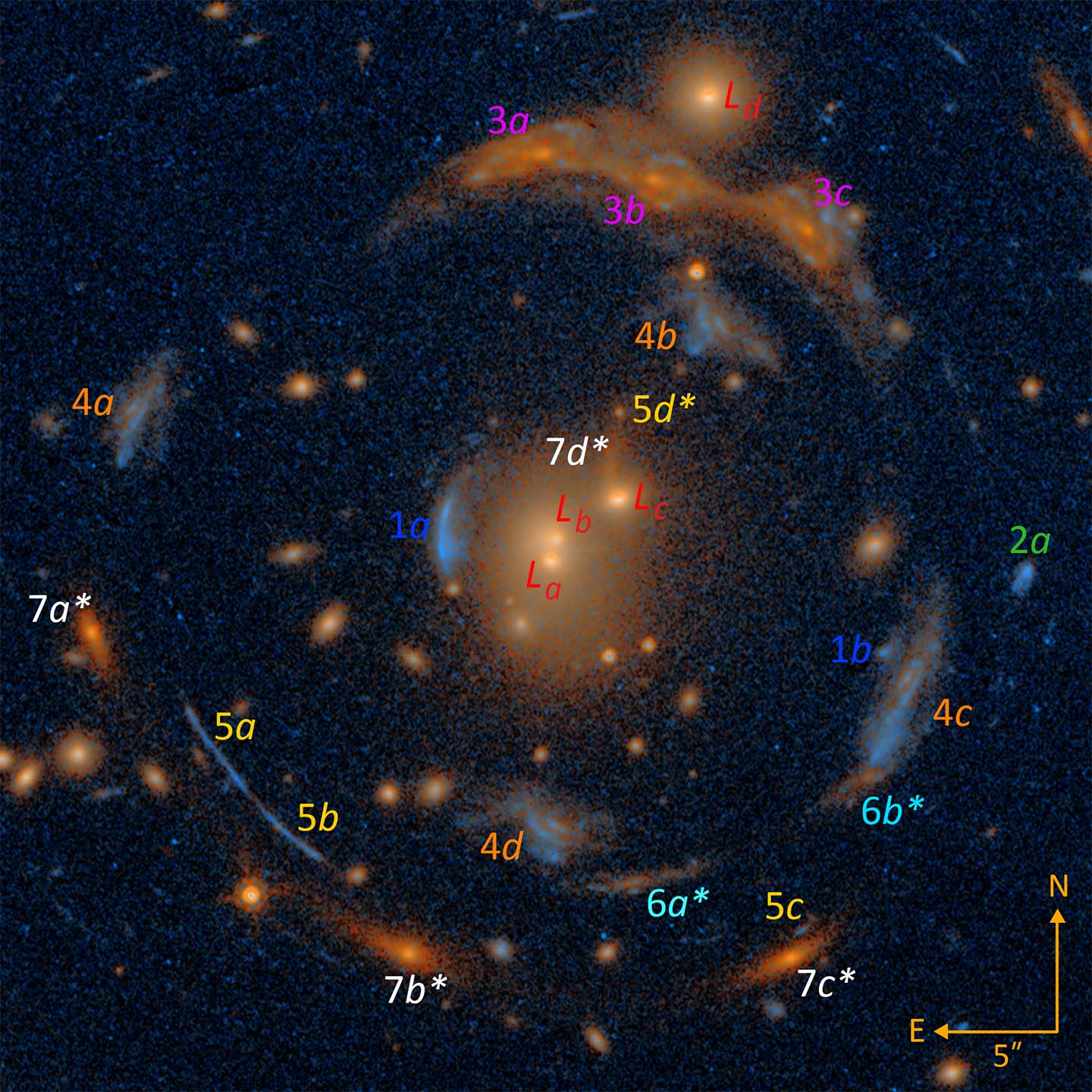
A newly discovered cluster-scale strong gravitational lens, with a rare alignment of seven background lensed galaxies, provides a unique opportuni...
Read More

A newly discovered cluster-scale strong gravitational lens, with a rare alignment of seven background lensed galaxies, provides a unique opportuni...
Read More
The James Webb Space Telescope has spotted six massive galaxies that emerged not long after the Big Bang, a study said Wednesday, surprising scientists by forming at a speed that contradicts our current understanding of the universe.
Since becoming operational last July, the Webb telescope has been peering farther than ever before into the universe’s distant reaches—which also means it is looking back in time.
For its latest discovery, the telescope spied galaxies from between 500 to 700 years million years after the Big Bang 13.8 billion years ago, meaning the universe was under five percent of its current age.
Webb’s NIRCam instrument, which operates in the near infrared wavelength invis...
Read More
Aside from a tapestry of glittering stars, and the glow of the waxing and waning Moon, the nighttime sky looks inky black to...
Read More
Detailed telescope images help scientists learn more about the Universe two billion years after the Big Bang. An international research team led by the University of Minnesota Twin Cities has measured the size of a star dating back 2 billion years after the Big Bang, or more than 11 billion years ago...
Read More
Recent Comments